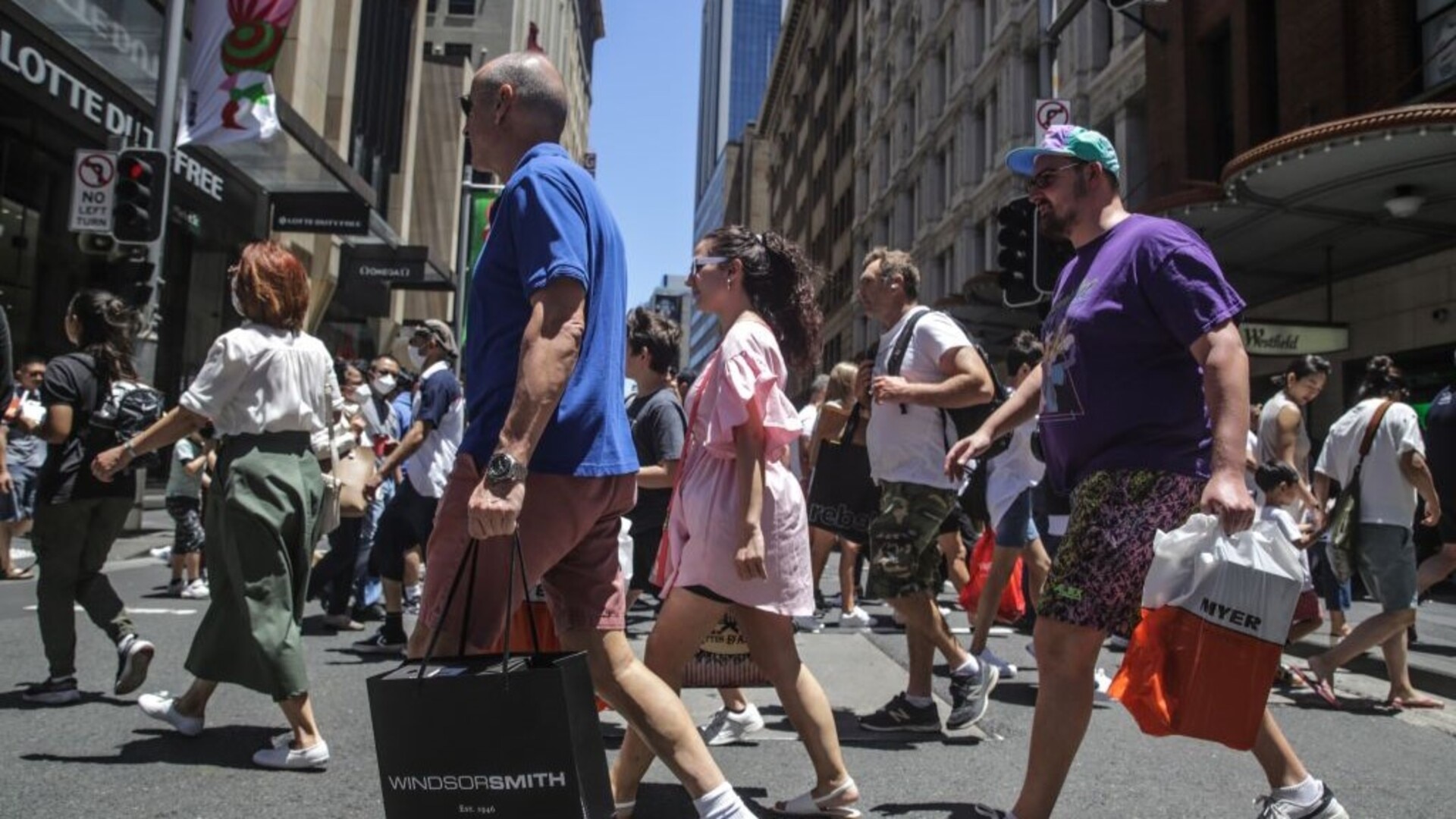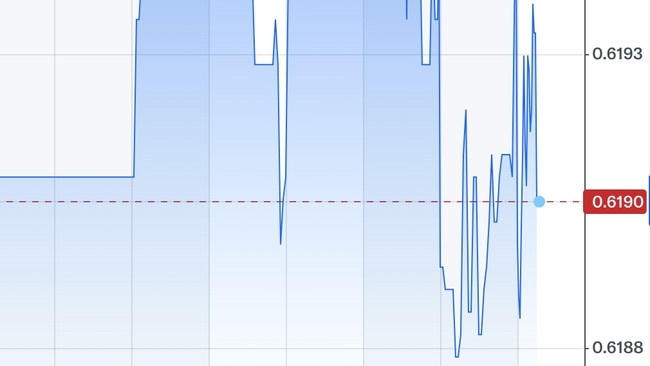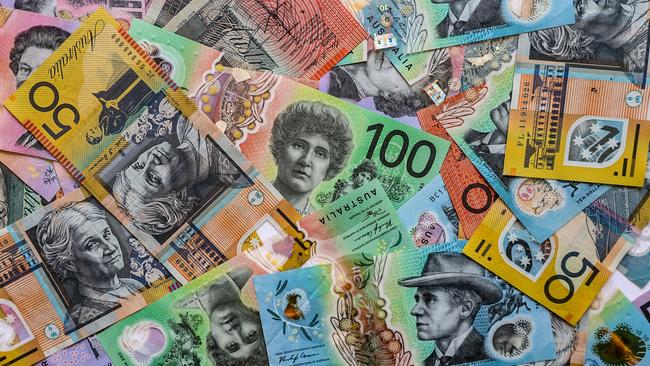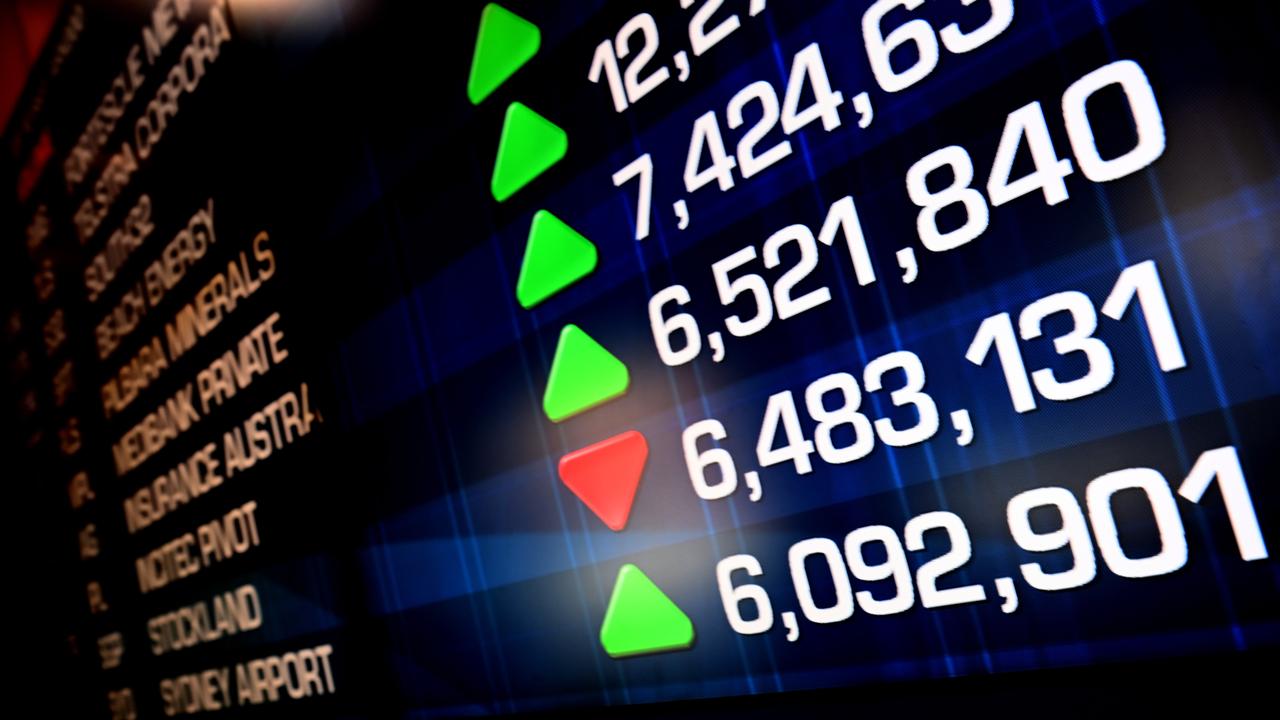Aussie dollar falls to Covid low, putting more pressure on RBA
The Australian dollar has fallen to a near-five-year low that is the worst seen since Covid.

Australian Dollar
Don't miss out on the headlines from Australian Dollar. Followed categories will be added to My News.
The Aussie dollar has fallen sharply again, hitting a near-five-year low that is the worst seen since the Covid pandemic.
The currency briefly hit 61.84 US cents during Thursday morning’s trading, and but has since risen slightly to 61.89 US cents.
Its last low was 61.85 US cents on April 7, 2020.

The AUD has also fallen against the pound, buying just 0.49 British pence.
A falling Aussie dollar is bad news for travellers and those buying products from overseas, but is a positive for Australian exporters with goods and services becoming relatively cheaper.
AMP chief economist Shane Oliver told NewsWire that if the trend continues, it could impact the RBA’s next rate decision.
“Imports account for between 10 to 15 per cent of the (consumer price index), so it can have a significant impact,” Dr Oliver said.
“It means every fall in the Aussie dollar by 10 per cent adds 0.1 to 0.15 per cent to inflation.”
“If it keeps falling from here - say 20 per cent since the start of 2024 - it could have an impact on the RBA’s decision.”
Experts say the weakness in the Aussie dollar reflects overseas factors in China and the US, with Capital.com senior financial market analyst Kyle Rodda saying the AUS/USD remained “primarily a proxy” for China’s “economic malaise”.
“The AUD/USD has slipped below 62 cents and to a new two-year low, with Chinese President Xi’s New Years address pointed to as the latest catalyst for a weaker Aussie dollar,” he said.

IG market analyst Tony Sycamore instead pointed to Donald Trump’s US election victory, with his fiscal policy resulted in a stronger US dollar.
“The market’s response to Trump’s election victory was largely in line with expectations, with the US dollar gaining significantly, especially against the New Zealand dollar (NZD) and AUD,” he wrote in an investor note.
“The fate of AUD/USD in 2025 will largely depend on developments following Trump’s inauguration on January 20.
“Particular interest will focus on which of Trump’s policies are implemented, their timelines, and how they compare to his pre-election promises.”
Mr Sycamore said in the lead-up to the US election, President-elect Trump hinted at raising tariffs on Chinese imports to 60 per cent or higher, and a less severe 25 per cent on Canada and Mexico.
“Currently, approximately 60 per cent of imports from China are subject to tariffs averaging 17 per cent,” Mr Sycamore said.
“The market consensus is that Trump’s tariffs on China may rise to around 40 per cent.
“If the actual tariffs are lower than this, it should provide some relief for AUD/USD - however, any increase beyond 40 per cent is likely to weigh heavily on AUD/USD.”
Originally published as Aussie dollar falls to Covid low, putting more pressure on RBA


